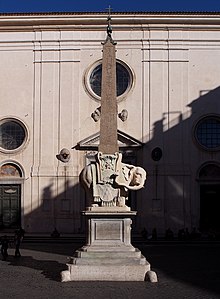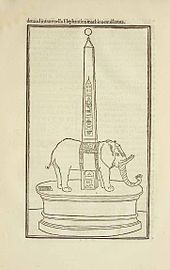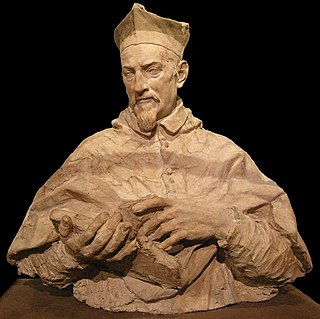
Alessandro Algardi was an Italian high-Baroque sculptor active almost exclusively in Rome, where for the latter decades of his life, he was, along with Francesco Borromini and Pietro da Cortona, one of the major rivals of Gian Lorenzo Bernini. He is now most admired for his portrait busts that have great vivacity and dignity.

Gian LorenzoBernini was an Italian sculptor and architect. While a major figure in the world of architecture, he was more prominently the leading sculptor of his age, credited with creating the Baroque style of sculpture. As one scholar has commented, "What Shakespeare is to drama, Bernini may be to sculpture: the first pan-European sculptor whose name is instantaneously identifiable with a particular manner and vision, and whose influence was inordinately powerful ..." In addition, he was a painter and a man of the theatre: he wrote, directed and acted in plays, for which he designed stage sets and theatrical machinery. He produced designs as well for a wide variety of decorative art objects including lamps, tables, mirrors, and even coaches.

The Quirinal Hill is one of the Seven Hills of Rome, at the north-east of the city center. It is the location of the official residence of the Italian head of state, who resides in the Quirinal Palace; by metonymy "the Quirinal" has come to stand for the Italian president. The Quirinal Palace has an extension of 1.2 million square feet.

Fontana del Tritone is a seventeenth-century fountain in Rome, by the Baroque sculptor Gian Lorenzo Bernini. Commissioned by his patron, Pope Urban VIII, the fountain is located in the Piazza Barberini, near the entrance to the Palazzo Barberini that Bernini helped to design and construct for the Barberini, Urban's family. This fountain should be distinguished from the nearby Fontana dei Tritoni by Carlo Francesco Bizzaccheri in Piazza Bocca della Verità which features two Tritons.
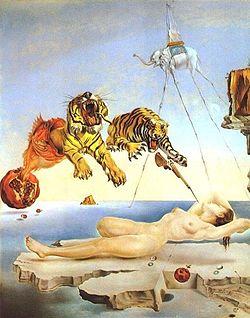
Dream Caused by the Flight of a Bee Around a Pomegranate a Second Before Awakening is a surrealist painting by Salvador Dalí. A shorter alternate title for the painting is Dream Caused by the Flight of a Bee. It was painted in 1944, and the woman in the painting, dreaming, is said to represent his wife, Gala. The painting is currently in the Thyssen-Bornemisza Museum, in Madrid.

Santa Maria sopra Minerva is one of the major churches of the Order of Preachers in Rome, Italy. The church's name derives from the fact that the first Christian church structure on the site was built directly over the ruins or foundations of a temple dedicated to the Egyptian goddess Isis, which had been erroneously ascribed to the Greco-Roman goddess Minerva.

Saint Peter's Square is a large plaza located directly in front of St. Peter's Basilica in Vatican City, the papal enclave in Rome, directly west of the neighborhood (rione) of Borgo. Both the square and the basilica are named after Saint Peter, an apostle of Jesus whom Catholics consider to be the first Pope.

Fontana dei Quattro Fiumi is a fountain in the Piazza Navona in Rome, Italy. It was designed in 1651 by Gian Lorenzo Bernini for Pope Innocent X whose family palace, the Palazzo Pamphili, faced onto the piazza as did the church of Sant'Agnese in Agone of which Innocent was the sponsor.
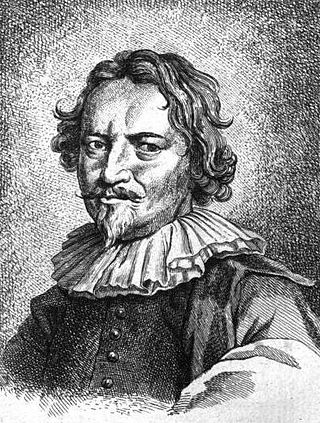
Carlo Fontana (1634/1638–1714) was an Italian architect originating from today's Canton Ticino, who was in part responsible for the classicizing direction taken by Late Baroque Roman architecture.

Aeneas, Anchises, and Ascanius is a sculpture by the Italian artist Gian Lorenzo Bernini created c. 1618–19. Housed in the Galleria Borghese in Rome, the sculpture depicts a scene from the Aeneid, where the hero Aeneas leads his family from burning Troy.

The Rape of Proserpina, more accurately translated as the Abduction of Proserpina, is a large Baroque marble group sculpture by Italian artist Gian Lorenzo Bernini, executed between 1621 and 1622, when Bernini's career was in its early stage. The group, finished when Bernini was just 23 years old, depicts the abduction of Proserpina, who is seized and taken to the underworld by the god Pluto. It features Pluto holding Proserpina aloft, and a Cerberus to symbolize the border into the underworld that Pluto carries Proserpina into.

Piazza della Minerva is a piazza in Rome, Italy, near the Pantheon. Its name derives from the existence of a temple built on the site by Pompey dedicated to Minerva Calcidica, whose statue is now in the Vatican Museums.

Truth Unveiled by Time is a marble sculpture by Italian artist Gian Lorenzo Bernini, one of the foremost sculptors of the Italian Baroque. Executed between 1645 and 1652, Bernini intended to show Truth allegorically as a naked young woman being unveiled by a figure of Time above her, but the figure of Time was never executed.

The Palazzo di Propaganda Fide is a palace located in Rome, designed by Gian Lorenzo Bernini, then Francesco Borromini. Since 1626, it has housed the Congregation for the Evangelization of Peoples and since 1929 is an extraterritorial property of the Holy See. The complex includes a dormitory and chapel as well.

The Piazza della Rotonda is a piazza in Rome, Italy, on the south side of which is located the Pantheon. The square gets its name from the Pantheon's informal title as the church of Santa Maria Rotonda.

Memorial to Maria Raggi is a sculptural monument designed and executed by the Italian artist Gian Lorenzo Bernini, started in 1647 and finished in 1653. The monument is attached to a pillar in a nave of the church of Santa Maria sopra Minerva in Rome.

The Statue of Pope Clement X is one of the final sculptural works executed by the Italian artist Gian Lorenzo Bernini. It depicts Pope Clement X in the act of benediction, and is housed in the Galleria Nazionale d'Arte Antica in the Palazzo Barberini, Rome.

The Memorial to Alessandro Valtrini is a funerary monument designed by the Italian artist Gian Lorenzo Bernini in 1639, and executed by his workshop in the same year. It is situated in the church of the San Lorenzo in Damaso in Rome. It has strong affinities with the Memorial to Ippolito Merenda; both were undertaken by Bernini's workshop and commissioned by Cardinal Francesco Barberini to commend the ecclesiastical work done by Valtrini and Merenda respectively. In aesthetic terms, both broke new ground in figuring Death as a moving skeleton carrying a flowing inscriptions and, in the case of Alessandro Valrtrini monument, a medallion-shaped portrait of Valtrini himself.

Obeliscus Pamphilius is a 1650 work by the Jesuit scholar Athanasius Kircher. It was published in Rome by Ludovico Grignani and dedicated to Pope Innocent X in his jubilee year. The subject of the work was Kircher's attempt to translate the hieroglyphs on the sides of an obelisk erected in the Piazza Navona.
